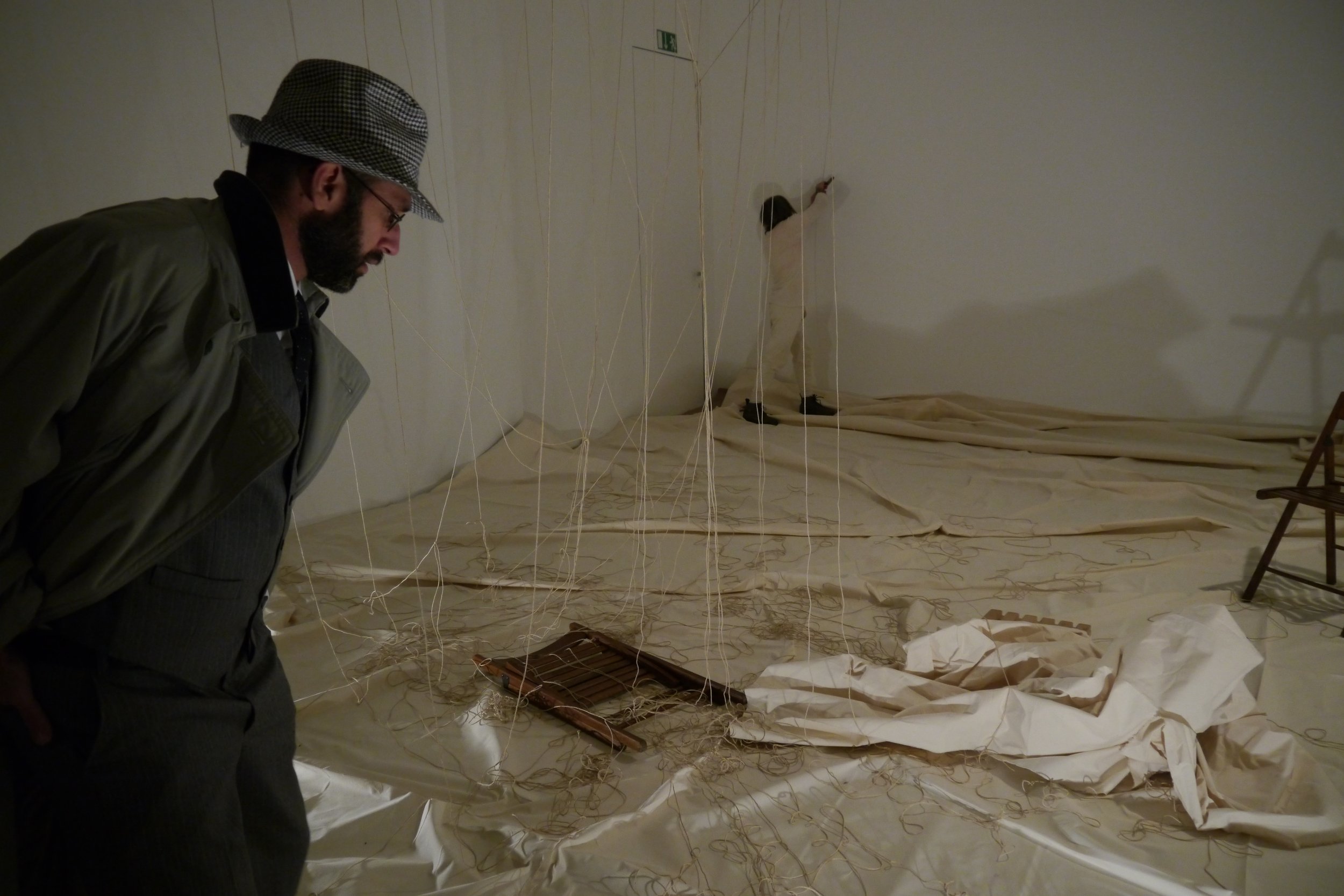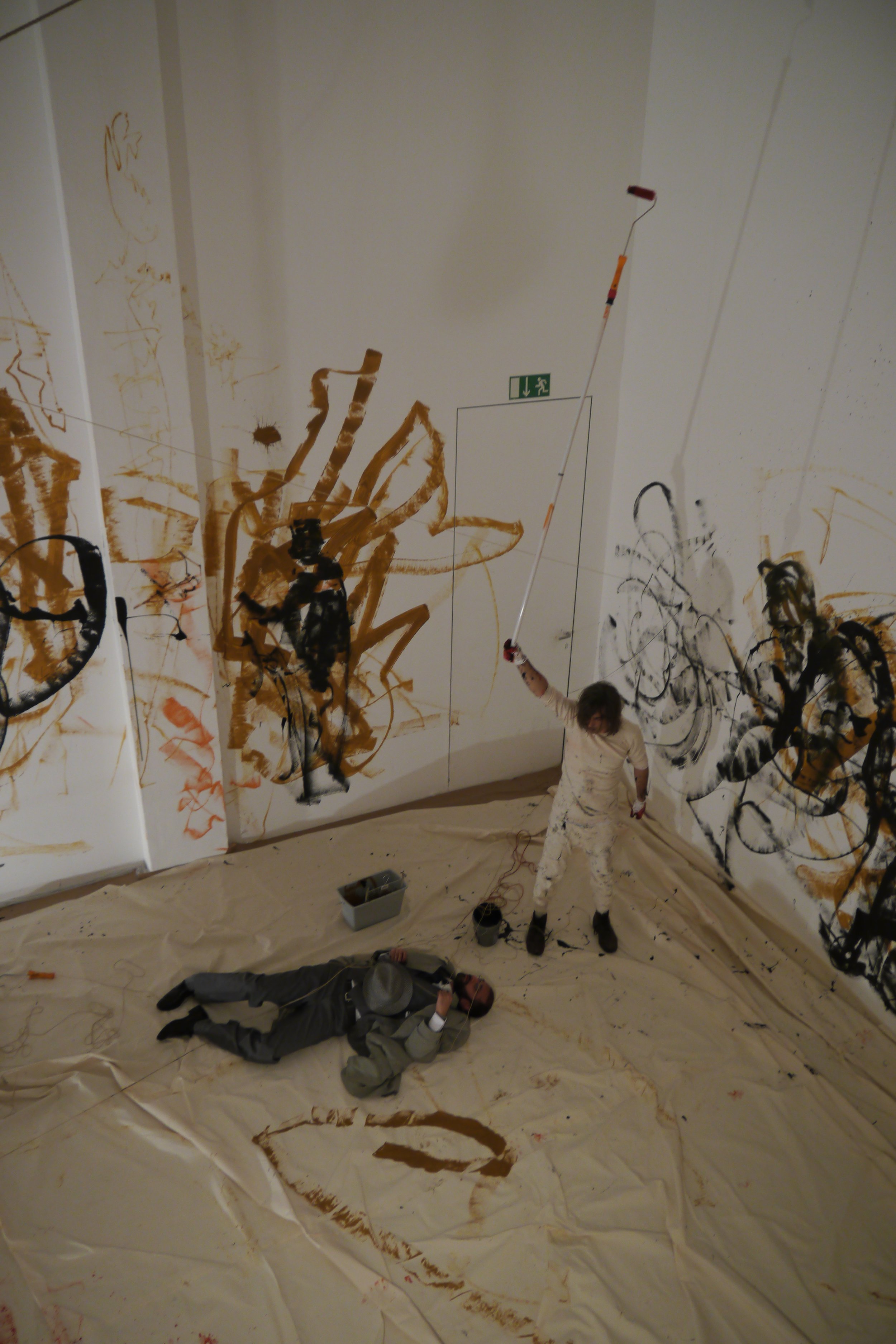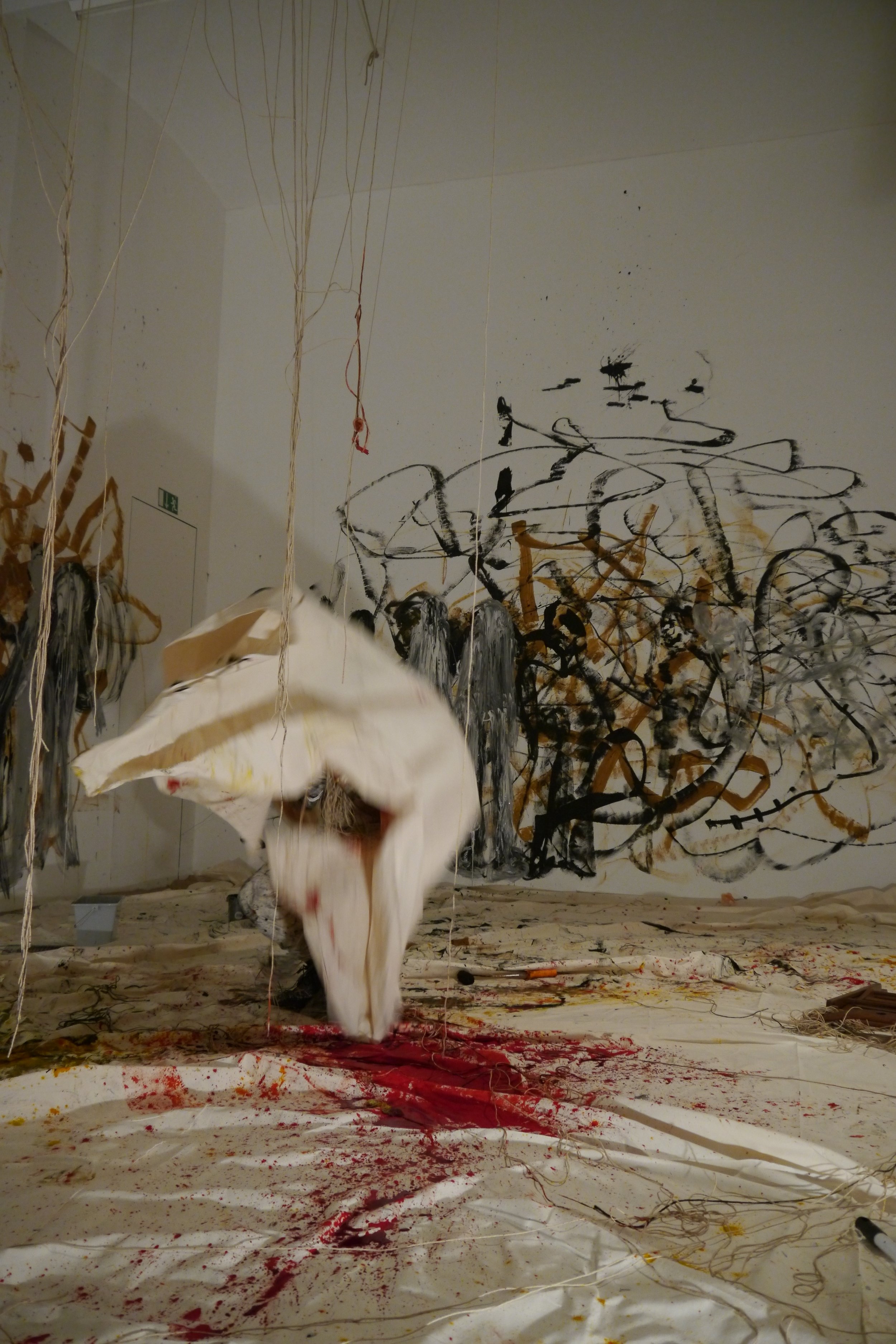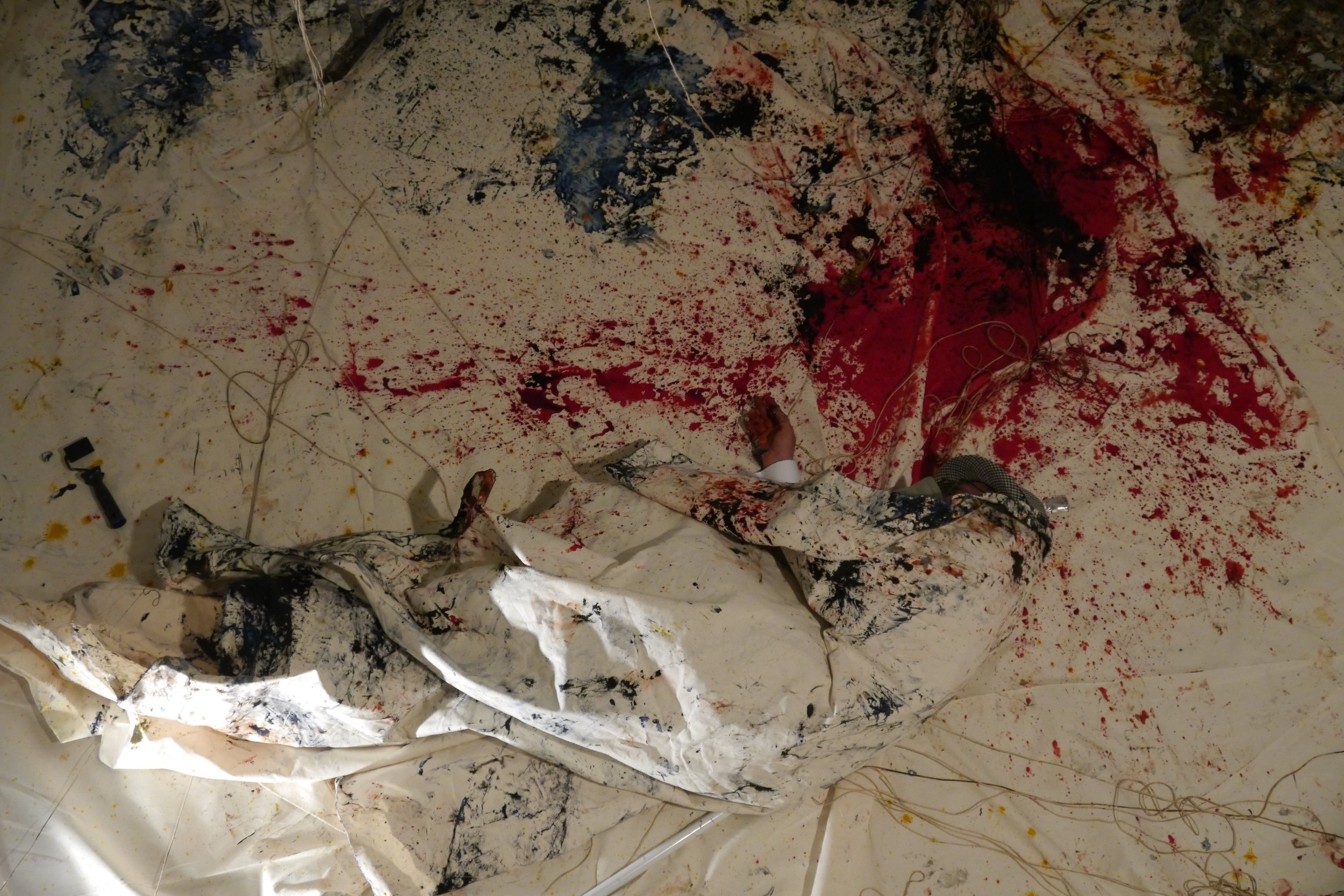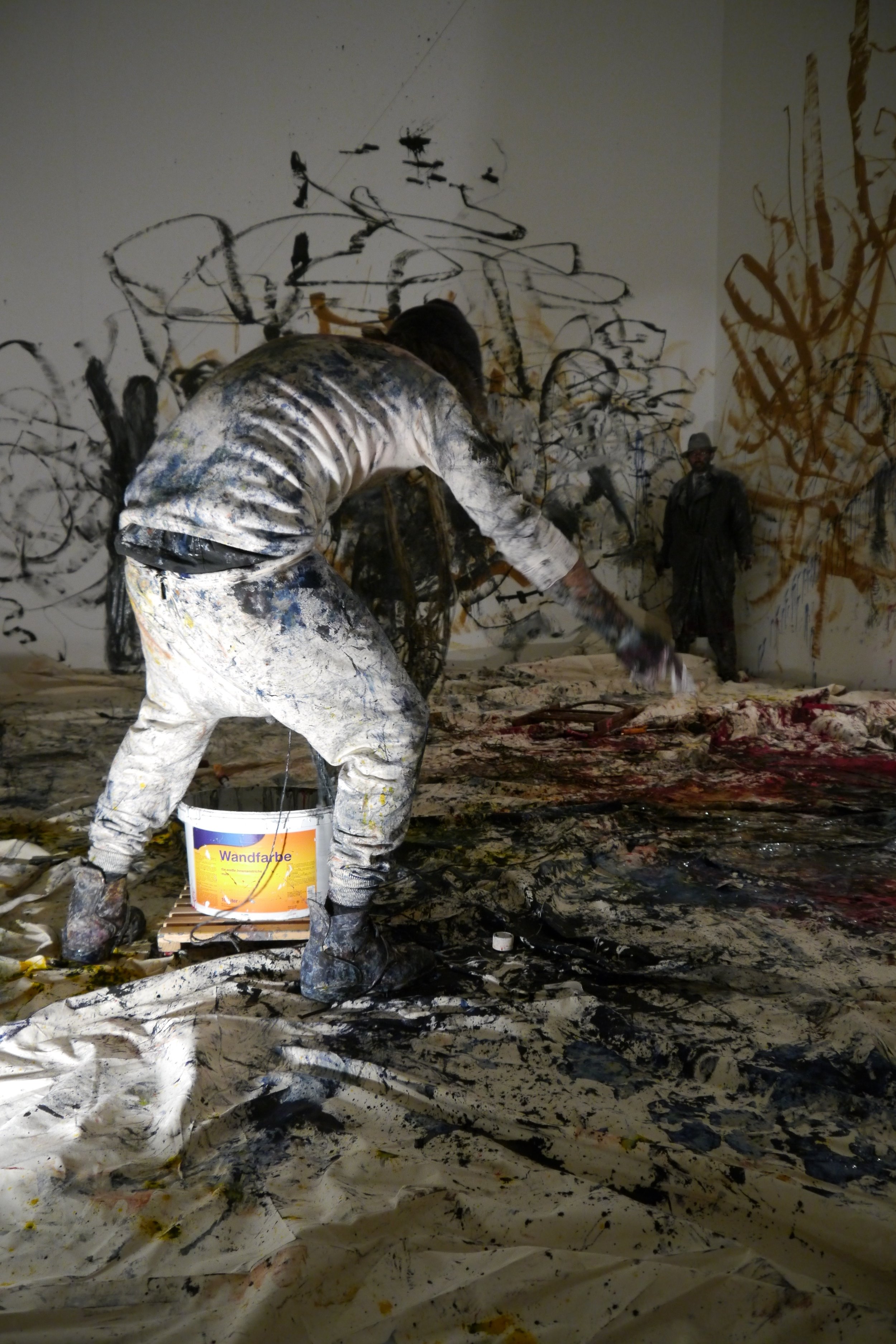
ACT::ING
December, 2011
Collaboration with Dolanby
Performed at and Commissioned by Meinblau - House of Arts, Berlin
Supported by the International Research Center 'Interweaving Performance Cultures' at Freie Universität Berlin
Curation & Photography by Tina Lange
“Performance art has been the starting point for some of the most radical ideas that have changed the way artists and audiences think about art. Performance art tended to be defined as an antithesis to theatre, challenging conventional art forms and cultural norms.
The idea was to be an ephemeral and authentic experience for performer and audience in an event that could not be repeated, captured or purchased.
The realities of border-crossings, loose disciplines and ambiguous identities have instead made sub-categories in art making non-relevant, even misleading. But the legacy of performance art has played a prominent role in informing the methods and languages of contemporary practices.
Acting is a structural form imitating the world. Act is a space emptied of the factitious and the fictitious. It does not clash with authenticity but replaces coherences with the illusory world of the „truth“. With performance, however, a work exists by virtue of its execution, which is far from being a superficial affair. It remains radical because it is live and demands attention.
Performative art describes the artists’ explorations of the processes they use to create art. These acts are more important to the artists practice than the finished art objects.
The artists put themselves into a time zone parallel to the mundane, entering empirical journeys and questioning the notion of activity and passivity in the mode of creation.
The liminal experience allows an actual being in the experience. Their work constitutes a migration of performance as a time-based medium to a timeless one while simultaneously maintaining the real-time grammar of the performative act. The entire space becomes a playground for drawing, painting and sculptural exercises and more, a kind of laboratory that is only interested in the realm of the experience and not primarily in the results that might proceed.
Art’s aim is to destroy any a priori agreement about what is perceived. The empty white cube becomes a site, filled by expectations and imaginations, a private and as much a public space, this white cube contains a set of artistic practices, which take as their theoretical and practical point of departure the whole of human relations and the awareness of self-reflexivity.
The contemporary form of modernity is haunted by the occupancy of performativity, hence making a work involves the invention of a process of presentation. In this kind of process, the image is the act.”
- Tina Lange


